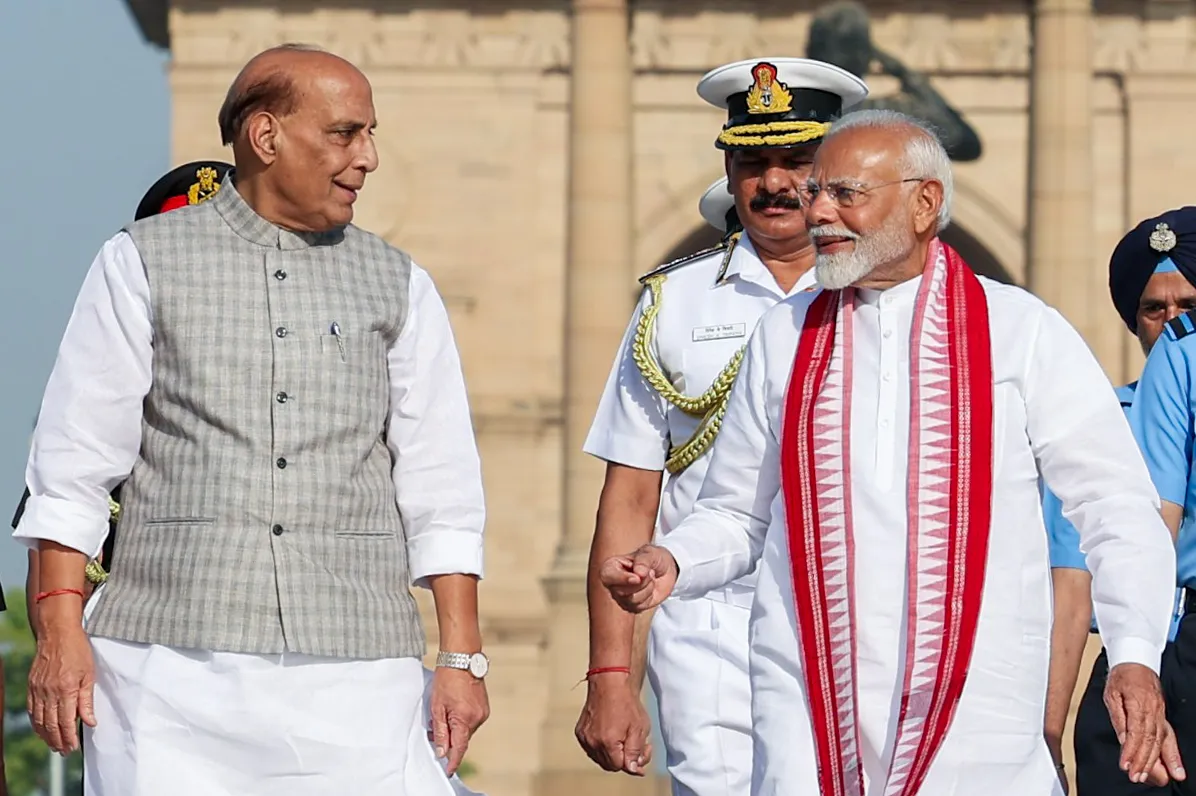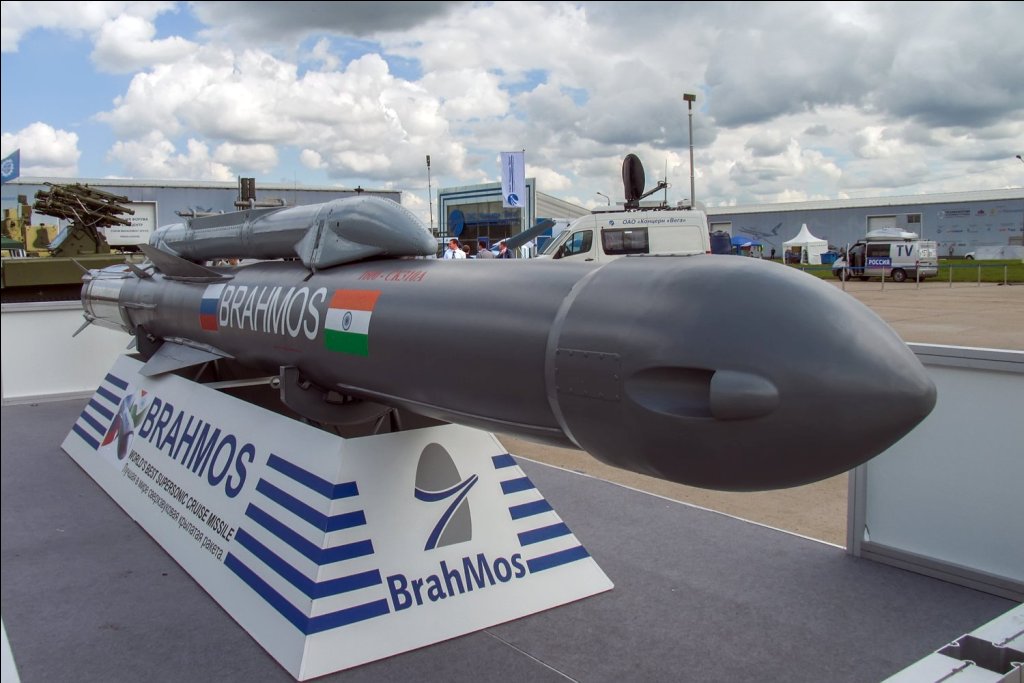India launched Operation Sindoor on May 7 and struck nine terror sites in Pakistan and Pakistan-Occupied-Kashmir in response to a ghastly terror attack in Jammu and Kashmir’s Pahalgam last month in which 26 people were killed.
After Operation Sindoor, the “fire and forget” BrahMos became a celebrity missile overnight! Indian Air Force struck nine Pakistani airbases with formidable BrahMos missiles during the recent Operation Sindoor, as a retaliatory move against the Pahalgam terror attack of April 22 which claimed the lives of 26 innocent civilians.
The precision, speed and devastation caused by these supersonic missiles sent a message loud and clear to the world: Beware! India is a now a force to reckon with!
From the newly launched Aerospace Integration and Testing Facility in Lucknow, 80 to 100 BrahMos missiles will be produced annually. In addition, 100 to 150 next-generation BrahMos missiles will also be manufactured each year.
What is BrahMos?
BrahMos is considered as one of the fastest and most accurate cruise missiles. It can be launched from land, air or sea and travels at Mach 3 speed (three times the speed of sound). It can strike within a meter of its target and follows a “fire and forget” guidance system.
Its powerful attack on Pakistani bases like Rafiqui and Mureed left their HQ-9B air defences helpless. To put it simply, Pakistan failed to confront a single BrahMos attack!
BrahMos has undergone significant upgrades, versions with increased range, such as BrahMos-ER, have been tested; BrahMos-II, with speeds of Mach 7-8, is under development and BrahMos-NG, with reduced size and radar cross-section, is being developed for enhanced capabilities, according to Defence analyst Sanjeev Srivastava.
As of now, fighter jets like the Sukhoi can carry only one BrahMos missile. However, they will now be able to carry up to three next-generation BrahMos missiles. The next-generation BrahMos missile will have a strike range of over 300 kilometres and weigh 1,290 kilograms, compared to the current BrahMos missile, which weighs 2,900 kilograms.

Make in India: Defence Minister Rajnath Singh signed deal for BrahMos
India’s diplomatic engagements and defence strategies are guided by national interests and remain free from external influence. India is no longer just a buyer of world-class weaponry, it is also a producer.
The Ministry of Defence signed five major capital acquisition contracts worth Rs 39,125.39 crore on March 1, 2024 in New Delhi. The Contracts were exchanged in the presence of Defence Minister Rajnath Singh and Defence Secretary Giridhar Aramane.
Out of the five contracts, one was with Hindustan Aeronautics Limited for procurement of Aero-engines for MiG-29 aircraft, two with Larsen & Toubro Limited for procurement of Close-in Weapon System and procurement of High-Power Radar and two with BrahMos Aerospace Private Limited (BAPL) for procurement of BrahMos missiles and procurement of Ship borne BrahMos system for the Indian Defence Forces.
The purpose of these deals is to strengthen indigenous capabilities, save foreign exchange and reduce dependency on Foreign Origin Equipment Manufactures in future.
The contract for procurement of BrahMos missiles has been signed with BrahMos Aerospace Private Limited (BAPL) at a cost of Rs 19,518.65 crore. These missiles would be utilised to meet combat outfit and training requirements of Indian Navy.
The contract for Procurement of Ship borne BrahMos system has also been signed with BrahMos Aerospace Private Limited (BAPL) at a cost of Rs 988.07 crore. This system is the Indian Navy’s primary weapon for maritime strike operations fitted onboard various frontline warships. The system is capable of hitting land or sea targets from extended ranges with pinpoint accuracy at supersonic speeds.
BrahMos surpasses China’s advanced air defence systems
Defence expert Sanjeev Srivastava has highlighted the unmatched power of India’s BrahMos supersonic cruise missile, citing US defence expert John Spencer’s remarks that the missile’s capabilities surpass even China’s advanced air defence systems.
“US defence expert John Spencer stated that India’s BrahMos supersonic missile is so advanced that even China’s air defence systems have been unable to intercept it. He noted that this highlights India’s significant military edge, particularly in its operations against Pakistan, where the failure of Pakistan’s HQ-9B air defence system was exposed. Spencer added that India’s successful retaliatory strikes using BrahMos missiles demonstrated their effectiveness, generating global interest in the weapon. The India-Russia collaboration on the BrahMos missile has proven to be a major success, with the system now being exported to other countries as well,” he said.
BrahMos used in Operation Sindoor confirmed UP CM Yogi Adityanath
Uttar Pradesh Chief Minister Yogi Adityanath recently confirmed that the BrahMos missiles were used during India’s military operations to strike Pakistani terror-outfits during Operation Sindoor.
“You must have seen a glimpse of the BrahMos missile during Operation Sindoor. If you didn’t, then just ask the people of Pakistan about the power of the BrahMos missile,” Adityanath said during an address to the state. He was speaking at the inauguration of the BrahMos Aerospace Integration and Testing Facility in Lucknow.



